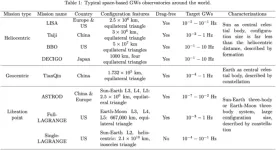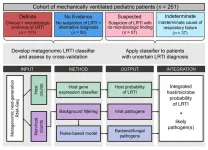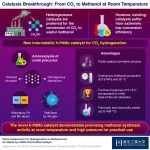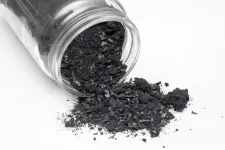(Press-News.org) A new study has identified potential neurological biomarkers of long COVID-19 in nonhuman primates that may help physicians diagnose, monitor and treat this condition.
Over 65 million people worldwide have developed long COVID after being infected with SARS-CoV-2, and cases are only becoming more common. Long COVID symptoms can last weeks, months or years. Even more perplexing is the fact that symptoms can vary widely between individuals and consist of any combination of fatigue, fever, chest pain, trouble breathing, neurological symptoms such as “brain fog,” and many more. Long COVID puts a gigantic burden on the U.S. healthcare system, and some doctors doubt the condition exists, leaving some patients unable to find care.
A team of researchers at Tulane University is trying to shed light on this condition and find tools to manage it. They published their work in the journal Molecular & Cellular Proteomics.
“Our primary goal was to better understand the inside of the brain after COVID infection,” said Jia Fan, an assistant professor of biochemistry and molecular biology who oversaw the study. “This understanding could provide a potential target to use in the clinic for long COVID evaluation and monitoring. We also thought this study may give us some clues to find a potential treatment strategy for long COVID in patients.”
However, because long COVID can vary drastically between individuals, studying this disorder has been difficult for scientists and clinicians alike.
“There's a very limited understanding of the neuropathogenesis of long COVID,” Fan said. “It is almost impossible to get any brain tissue or samples of any kind from patients that have mild symptoms or no long COVID symptoms because there is no reason for invasive procedures.”
Therefore, the group turned to a nonhuman primate model of long COVID.
The team found that certain proteins associated with neurodegenerative disorders, such as Parkinson's disease, were elevated in the brain, cerebrospinal fluid and blood after SARS-CoV-2 infection even in nonhuman primates that showed mild or no symptoms. Maity explained that these elevated proteins indicate that the immune systems of the monkeys remained activated even after infection.
“Our findings suggest that the major neurological complications are arising due to the body's natural immune defenses,” Maity said. “The immune system has a very important and significant impact on the neurological complications of COVID.”
The next steps of the project involve validating the biomarkers the team identified in human samples such as blood, said Fan.
“It is currently hard to score the severity of (long COVID) patient symptoms because they are based on self-reports,” Fan said. “If we can find a group of proteins in the blood associated with long COVID, this is a less invasive way to easily evaluate the severity of the long COVID patients. We hope what we started can provide a clue to find a potential treatment to better the long COVID patient experience.”
About the American Society for Biochemistry and Molecular Biology (ASBMB): The ASBMB is a nonprofit scientific and educational organization with more than 12,000 members worldwide. Founded in 1906 to advance the science of biochemistry and molecular biology, the society publishes three peer-reviewed journals, advocates for funding of basic research and education, supports science education at all levels, and promotes the diversity of individuals entering the scientific workforce. For more information about the ASBMB, visit www.asbmb.org.
END
Finding a way to combat long COVID
Recent study reveals neurodegenerative biomarkers after COVID-19, gives clues for monitoring and potential treatment
2023-04-05
ELSE PRESS RELEASES FROM THIS DATE:
Overview of orbital mechanics for space-based gravitational wave observatories
2023-04-05
Gravitational waves (GWs) are “ripples in space-time”. The detection of gravitational waves (GWs) is critical to the understanding of the origin and evolution of stars, galaxies, and the Universe. At present, the laser interferometry is the most commonly use technology to detect GWs by measuring the phase change between two beams of coherent light. Due to the limitations of arm length, the ground-based GWs measurement is hard to detect the low-frequency GWs. While the space-based GWs observation is capable of longer arm length of the interferometer, the detection of GWs in space is expected to cover a greater number and variety of ...
Cracking the puzzle of lower respiratory tract infections in children
2023-04-05
Lower respiratory tract infection (LRTI), which includes conditions such as pneumonia, has long been the leading cause of death from communicable agents and a leading cause of death in children worldwide. But despite its prevalence, LRTI is tricky for doctors to treat effectively because the current diagnostic approach often fails to conclusively determine whether an infection is present at all, and if so, what pathogen is causing it.
Now, in a study published April 3, 2023 in The Journal of Clinical Investigation, a team led by researchers at the Chan Zuckerberg Biohub San Francisco (CZ Biohub SF), UC San Francisco (UCSF), the University ...
Opening a new frontier: PdMo intermetallic catalyst for promoting CO2 utilization
2023-04-05
Being the most abundant and persistent greenhouse gas emitted, carbon dioxide (CO2) is the key driver of climate change. To address the pressing problems associated with climate change and fossil fuel depletion, scientists are looking for viable solutions that can minimize the amount of CO2 released into the atmosphere. One attractive solution to this problem is to convert atmospheric CO2 into more useful compounds. Towards this end, methanol - a raw material, fuel additive, and energy carrier, is widely being explored as a promising conversion option for CO2.
Now, while various catalysts ...
SwRI, Tec de Monterrey award funding for sustainable manufacturing research
2023-04-05
SAN ANTONIO — April 5, 2023 —Southwest Research Institute and Tecnológico de Monterrey (Tec de Monterrey) will jointly fund three research and development initiatives to advance sustainable manufacturing and technology in the United States and Mexico. The trio of projects are the first selected to receive support through the Sustainable Manufacturing Program, a transnational research and development collaboration established between SwRI and Tec de Monterrey — a private, nonprofit, independent university based in Monterrey, Mexico — in August 2022. The program provides grant opportunities funded ...
How were amino acids, one of the key building blocks of life, formed before the origin of life on Earth? Tiny particles from the near Earth asteroid Ryugu can help answer this profound question
2023-04-05
Our solar system formed from a molecular cloud, which was composed of gas and dust that was emitted into the interstellar medium (ISM), a vast space between stars. On collapse of the molecular cloud, the early sun was formed, with a large disk of gas and dust orbiting it. The dusty material collided to produce rocky material that would eventually grow in size to give large bodies called planetesimals.
The planetesimals that formed far enough from the sun, also contained large quantities of ice. The ice consisted of water and other volatile compounds, such as carbon monoxide (CO), carbon dioxide (CO2), methanol (CH3OH) and ammonia (NH3), as well as ...
Air pollution is linked to lower COVID-19 vaccine responses
2023-04-05
People exposed to higher levels of air pollution before the pandemic had lower antibody responses to COVID-19 vaccines, according to a study led by the Barcelona Institute for Global Health (ISGlobal), an institution supported by “la Caixa” Foundation, in collaboration with the Germans Trias i Pujol Research Institute (IGTP). In particular, exposure to fine particulate matter (PM2.5), nitrogen dioxide (NO2) and blank carbon (BC) was associated with about a 10% decrease in IgM and IgG antibody responses in people without prior infection. The findings, published in Environmental Health Perspectives, ...
More than a third of children worry at least once a week, with their tendency to worry progressing with age, according to national survey by Nemours KidsHealth(R)
2023-04-05
WILMINGTON, Del. (April 5, 2023) – More than one in three children ages 9 to 13 (37%) worry at least once a week, primarily about school (64%) and friendships (41%), with their tendency to worry progressing with age. Older children (age 13) are more likely than their younger counterparts to report feeling as though they will never stop worrying (48% vs. 22% for 9-year-olds). This is according to the results of What’s Worrying America’s Kids, a national survey conducted by The Harris Poll on behalf of Nemours KidsHealth. The survey results ...
TOS endorses global editorial on people-first language and pediatric obesity
2023-04-05
ROCKVILLE, Md.—The Obesity Society (TOS) has joined several European, US and Canadian obesity organizations in an editorial statement published in the journal Pediatric Obesity championing the use of people-first language for pediatric overweight and obesity to address weight stigma and bias.
Professor David Thivel, president of the European Childhood Obesity Group and coordinator of the joint statement, said, "This paper emphasizes the importance of considering the use of people-first language when it comes to pediatric obesity, by all who work with, care for or support children and adolescents, in order to avoid stigmatization and to create an appropriate and optimal ...
Complications for procedure to open clogged pulmonary arteries decrease significantly
2023-04-05
For patients with high blood pressure in their pulmonary arteries caused by chronic blood clots, complications after a minimally invasive balloon angioplasty have decreased substantially over the last decade, a Michigan Medicine-led study finds.
Researchers examined over 7,500 cases of balloon pulmonary angioplasty for patients with chronic thromboembolic pulmonary hypertension, an elevated blood pressure in the pulmonary arteries due to persistent blockages known as CTEPH, between 2013 and 2022. The procedure, which is offered ...
New tool shows progress in fighting spread of invasive grass carp in Great Lakes
2023-04-05
New research reveals the progress scientists at The University of Toledo are making in their ongoing efforts to capture and remove invasive grass carp from the Great Lakes.
Researchers based at the UToledo Lake Erie Center created a new way to estimate the abundance of invasive “sleeper” species in freshwater ecosystems and help guide management strategies.
Using data collected during their efforts to remove invasive grass carp from Lake Erie and its tributaries, the aquatic ecologists and environmental ...
LAST 30 PRESS RELEASES:
Sleeping in on weekends may help boost teens’ mental health
Study: Teens use cellphones for an hour a day at school
After more than two years of war, Palestinian children are hungry, denied education and “like the living dead”
The untold story of life with Prader-Willi syndrome - according to the siblings who live it
How the parasite that ‘gave up sex’ found more hosts – and why its victory won’t last
When is it time to jump? The boiling frog problem of AI use in physics education
Twitter data reveals partisan divide in understanding why pollen season's getting worse
AI is quick but risky for updating old software
Revolutionizing biosecurity: new multi-omics framework to transform invasive species management
From ancient herb to modern medicine: new review unveils the multi-targeted healing potential of Borago officinalis
Building a global scientific community: Biological Diversity Journal announces dual recruitment of Editorial Board and Youth Editorial Board members
Microbes that break down antibiotics help protect ecosystems under drug pollution
Smart biochar that remembers pollutants offers a new way to clean water and recycle biomass
Rice genes matter more than domestication in shaping plant microbiomes
Ticking time bomb: Some farmers report as many as 70 tick encounters over a 6-month period
Turning garden and crop waste into plastics
Scientists discover ‘platypus galaxies’ in the early universe
Seeing thyroid cancer in a new light: when AI meets label-free imaging in the operating room
Neutrophil-to-lymphocyte ratio may aid risk stratification in depressive disorder
2026 Seismological Society of America Annual Meeting
AI-powered ECG analysis offers promising path for early detection of chronic obstructive pulmonary disease, says Mount Sinai researchers
GIMM uncovers flaws in lab-grown heart cells and paves the way for improved treatments
Cracking the evolutionary code of sleep
Medications could help the aging brain cope with surgery, memory impairment
Back pain linked to worse sleep years later in men over 65, according to study
CDC urges ‘shared decision-making’ on some childhood vaccines; many unclear about what that means
New research finds that an ‘equal treatment’ approach to economic opportunity advertising can backfire
Researchers create shape-shifting, self-navigating microparticles
Science army mobilizes to map US soil microbiome
Researchers develop new tools to turn grain crops into biosensors
[Press-News.org] Finding a way to combat long COVIDRecent study reveals neurodegenerative biomarkers after COVID-19, gives clues for monitoring and potential treatment





